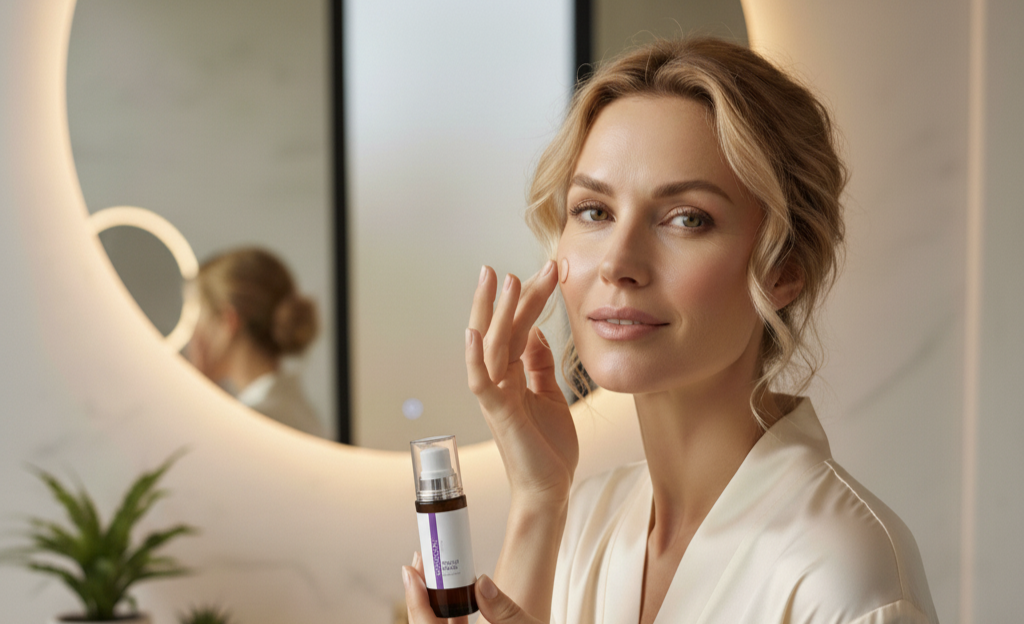Article: What is the difference between skin hydration and moisturisation?

What is the difference between skin hydration and moisturisation?
You’d be forgiven for thinking that hydration and moisturisation were one and the same thing, but nope, in the world of skincare they are two completely different things.
So, what is the difference between hydrating and moisturising?
In skincare, hydrating skin refers to the process of increasing the water content within skin cells, while moisturisation is then all about preventing water loss from the skin's surface, essentially trapping in the moisture.
Think of hydration as pushing water into the skin, and moisturisation as sealing that water in.
Why do we need to hydrate our skin?
Proper hydration helps keep skin cells plump and elastic, reducing the appearance of wrinkles and fine lines. It also aids in flushing out toxins, delivering nutrients, and protecting against environmental damage. I have talked a lot about the skin barrier in previous blogs, and keeping skin hydrated is a huge step towards maintaining good skin barrier function.
Maintaining skin elasticity
Hydrated skin cells are plump and elastic, allowing the skin to stretch and bounce back, which helps to prevent wrinkles and fine lines. Dehydration can lead to skin cells losing their volume, making the skin appear dull and contributing to the formation of wrinkles
Detoxification and feeding the skin cells
Hydration aids in the flushing out of toxins from the skin, promoting better circulation and overall skin health.
Helping deliver glow
Hydrated skin contributes to a more radiant and even complexion because skin cell turnover is faster, with the formation of new skincells and the casting off of old, dead and dull skin cells.
Protecting your skin barrier function
The skin's natural moisture barrier, which is a super-fine layer of lipids, protects the skin from external irritants and helps to retain moisture. If your skin gets dehydrated, this weakens the skin barrier, making the skin more vulnerable to damage and irritation.
What is the best way to hydrate our skin?
Well, drinking plenty of water every day is a huge help. Water is the vehicle by which nutrients are taken to all our cells, and toxins washed away. As well as water, you can eat hydrating foods such as melon and citrus fruits (which also contain lots of Vitamin C, of course, which we love) and healthy lipids from nuts, seeds, olive oil and avocado, for example. Oh, I do love a lifestyle choice that's delicious, not demanding!
However, as we age, this isn’t enough. Internal water sources are great, but we need to add an external strategy, too.
As we age, our cells become less efficient. It’s like a photocopy machine as it starts getting to the end of it's ink cartridge - each time it prints a new copy, it looks just a fraction less sharp than the last one. So as we age, we get less efficient at producing the hydrating natural marvel that is hyaluronic acid.
What is hyaluronic acid?
Hyaluronic acid is a humectant, meaning it attracts and retains moisture, keeping skin hydrated, supple, and smooth. It helps reduce the appearance of wrinkles and fine lines by maintaining skin volume and elasticity. It’s also used in our natural healing processes, promoting tissue regeneration and reducing inflammation, so you can see how vital it is.
Luckily, we can feed the skin some of the hyaluronic acid it needs topically, by using high concentrate serums. This is why I developed my Power HA serum. There are a lot of companies out there waving the hyaluronic acid flag, but not being at all clear on the concentration of hyaluronic acid in their products. In its purest form this is not a cheap ingredient, so take care to source products who put quality first.
My Power HA is a clinical-grade formula that supplies skin with a massive hydration boost, with HA as its primary active ingredient. Apply morning and night, on cleansed skin, and just feel your skin drink it in.
When to apply moisturiser
Always apply your hydrating serum BEFORE you apply your moisturiser. A good moisturiser will create a protective barrier on the skin, preventing water from evaporating. It will work to soften the skin, reduce that tight feeling of dryness, and support the skin barrier.
I have developed two distinct day moisturisers: Cream Lift and Cream Drench.
Cream Lift is a luxurious day cream packed with a powerful blend of peptides and hyaluronic acid that is perfect for using on the neck and decollete, too.
My Cream Drench is designed for skin that needs a little extra help. So if you find your skin feeling tighter as the day goes on, this one is for you. It’s also great for mixing with your foundation, to give a slightly more dewy glow.
And don’t forget that your whole body needs that hydration and moisturisation boost! Apply a gorgeous body lotion after stepping from the shower, when your skin is still slightly damp, and you will soon start to see the benefits on arms and legs.
Maybe try my new, and very gorgeous Pure Bliss Hand and Body Lotion - I promise you will love it!

